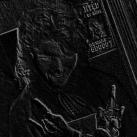Search the Community
Showing results for tags 'piano', 'sonata', 'solo' or 'alevel'.
-
Hi everyone! I have previously posted the second movement of my second Piano Sonata here: Now I am posting the first movement of the work! Here are the pdf and the mp3: Piano Sonata no.2 in A-flat Major First Movement.pdf Piano Sonata no.2 First Movement.mp3 I've also included the YT video here: I didn't introduce the inspiration of this sonata in my post in the second movement to have it here. Piano Sonata no.2 in A-flat major (2015) is composed right after the completion of the first Piano Sonata. It's the quickest composition at all since I had only used 3 weeks to finish the first draft of it.(It's very quick in my standard since well, I can use 6 years to compose my clarinet quintet...) I adopt a freer approach here to contrast with the first Piano Sonata which is very cohesive. Here I really just write what I want and this may result in less tight structure of the overall work. But it's definitely more akin to my emotion and feeling here! I only use 2 days to finish the first draft of this movement in 6-7 May 2015. It begins in a Schubertian manner and several episodes in it, stimulating the later movements and transformed into a Beethovanian one, akin to his op.110 in the same key. I really love how serene this movement begins and motivational at the end! The overall form of the piece can be considered as follow: B.1-32 (00:00-01:18): Main theme, serene and Schubertian in A flat major. Backbone of the piece B.33-81 (01:19-03:16): Secondary theme begins in f minor but confirms the A flat major. Inspire 2nd movement. B.82-98 (03:17-04:00): Doloroso in C sharp minor my favourite key! End of the first part. Inspire 4th movement. B.99-135 (04:01-05:00): Struggling to create power in a Beethovanian manner. B.136-159 (05:01-05:42) Reprise of the opening theme but in Beethovaian manner especially with influence of his op.110 in the same key!!(My favourite Beethovan Sonata too!) B.160-183 (05:43-06:25): Crystallization of the opening theme? Inspire fifth movement esp. its coda. B.184-194 (06:26-06:57): Affirmation of the opening theme though weakened at the end to pave the way to the denial in the second movement. I am very happy to have composed this sonata as I feel like I am free flowing during the process. I also love how the emotions flow within it whether it's serene, hopeful, tragic, agitated or transfigured. I just ignore all those parallel 5ths and 8ves since the sound is great. It may suffer from the lack of coherence though especially in the first movement, but it helps inspire the later movements with the episodes so I am very grateful I make this! The recoding is made in 18/03/2023. There are two obvious slips in 04:06 and 04:12. But the rest of the recording is quite beautiful and faithful to the music so I retain it. Hope you enjoy this as well and thanks for listening!!! P.S The post for the third movement is attached here: The post for the fourth movement is attached here: Henry
-
Uno de estos días... One of these days. A simple piano piece, with its twists .... That's the one of my dogs (calle Happy) is.
-
Hi everyone! I've decided to post another old work here. The Piano Sonata no.2 in A-flat major (2015) is composed right after the completion of the first Piano Sonata in A major, Pastoral. It's a work in five movements and I will say it's the quickest composition ever for me since I finish the 1st draft of the first three movements within a week and the whole piece within three weeks. For me this is a free flowing one after the strictly cohesive first Piano Sonata, and honestly I love this one more since it displays more real emotions here. The style overall is still very Beethovanian and I am sorry Vince! I choose to post the 2nd movement first because I am really happy to make a fairly good recording in 18th February and I really want to post this even without having a good recording for the 1st movement first. For me this Sonata is not that motivically cohesive as my other pieces is, so the order is not really too crucial here. The 2nd movement itself acts as a counterpart to the serene and motivational first movement with its fiery denial power to the beauty of the previous movement (you will get it when I post the first movement!). I take the inspiration from the finale of Chopin's 2nd Piano Sonata since I am always fascinated by how Chopin wrote with two unison lines and produced such excitement and fury. I also use Sonata form for this diminutive movement as I want to experiment using it within a small time span as in Chopin's movement: 00:00 (b.1) 1st Subject, Exposition, in c minor 00:16 (b. 21) 2nd Subject, Exposition, in f minor 00:27 (b.35) Development 00:47 (b.61) 1st Subject, Recapitulation, in c minor 00:54 (b.70) 2nd Subject, Recapitulation, in c minor 01:11 (b.93): Coda, based on the motive in the first movement (yet to be posted). That D flat minor surprise, muahaha, is to prepare the Fourth movement which is in C sharp minor, my favourite movement of the piece. I also take much inspiration from the first movement of Beethoven's op.111 since it's one of my favourite Beethoven Piano Sonata. I even quote exactly in b.85! (From b.25 of that movement) The overall planning of the movements will be disclosed after the completion of this post, and I will keep practicing those movements (as well as the movements of the First Piano Sonata), so stay tuned! Here is the pdf score and the mp3: Piano Sonata no.2 Second mov.pdf Piano Sonata no.2 2nd mov.mp3 Here is the youtube video if you are interested! P.S Thanks Vince for suggesting me to upload the movement first! P.P.S my favourite recording of Beethoven's op.111 is by Igor Levit since he's a god especially playing late Beethoven sonatas: Hope you enjoy the music and the day!! Henry
-
Hey guys. First post woo! This is for a class I'm taking (studying composition right now) and kind of just wanted general "first opinions" on this piece. Any feedback is good feedback, thanks 😄 Kinda lame, but this is very influenced by Mario Galaxy (specifically buoy base) lol it's a great soundtrack we can't deny it
-
Hi everybody, Going over some unfinished ideas, I came across this fragment. It has some unbalanced parts... But do you think I should retake it? I have made progress with my rhetoric figures, and soon the first entries will be ready... I thin I can use them in any style and I need some fresh different music (than the galant style I was studying).
-
Hi all, wanted to share a piece I have written very recently, and get your feedback, Enjoy the listening! Julien PS: scores (and midi) available on https://imslp.org/wiki/Tableau_No.3_(Piaser%2C_Julien)
-
Hi! I'm a senior in high school who plays piano and organ. Would any composers be interested in composing the finale of a four-movement piece based on a Ukrainian folk tune? My channel and I have been working on our "Symphonic Variations on a Ukrainian Folk Tune" for nearly 11 months. Without being overly political (political works of art tend to get dated quickly), our piece is a gesture in support of the Ukrainians and anyone else working for peace. This would admittedly be a tricky project. 🥴 1. The work would incorporate the folk tune "Long Live Free Ukraine": https://musescore.com/user/40554345/scores/7785305 , which is featured in the other three movements. 2. Also, the finale would need to incorporate ideas from the rest of the piece. This would help provide unity. An example would be the Ukrainian national anthem, one of the main themes of the opening Allegro Moderato. 3. It would be scored for piano, organ, a small SATB choir, and hopefully percussion. 4. The rest of the piece is surprisingly lengthy, so it would hopefully be at least 20 minutes in length to balance. (I do apologize if that seems like a lot.) 5. The work is not a piece of chamber music. We're calling for organ and piano instead of orchestra because that's much simpler. The choral finale would have the "feel" of a large-scale symphonic finale (think Myaskovsky or even Beethoven or Mahler 😳), successfully resolving all the tensions of the previous movements. Think big! Be a "visionary." Imagine that you could somehow resolve all the conflicts in the world through a single piece of music. 6. In addition, any potential composers would need to look over a current draft of the finale by the composer of the first movement. They'd incorporate whatever ideas they might want from the sketch in their composition. If they don't want to include anything from the draft, they definitely don't need to. (The composer and I thought that the sketch was unsatisfactory, but that it did contain a few decent ideas.) 7. I'm still working out what exactly what the choral text would be. 8. I'd be willing to pay up to five hundred dollars through PayPal. 9. The current structure of the work is I. Allegro Moderato (E minor, 13 minutes) [complete] II. Passacaglia (B-flat minor) [still in progress] III. Variations (E minor, 20+ minutes) [essentially complete] IV. Finale (E minor - E major, 20+ minutes) [unfinished] 10. Finally, I've recorded six of the third movement's variations and uploaded them to our YouTube channel, Classicore. I'll finish recording the piano and organ parts within the next few months, and other musicians I know will record the choral and percussion parts. We'll upload the finished project to the channel. https://www.youtube.com/watch?v=u5azSx8mwns&list=PLxww_oRF72uwahVSvXanfLYYHZilGYyMf This is admittedly a difficult project, but I would be incredibly grateful to find a composer to work with! If you're interested, definitely reach out! I'd appreciate it. Sincerely, Dominic Fiacco
-
1. Adagio Molto Moto: This movement explores the relationship between our mechanical world and our own expressiveness as a species. 2. Contemplatively Pious: This movement is a self-meditation for the listener. An opportunity to breath after the soundmass of the first movement and consider the world within which we live. 3. Savagely, Allegro Vivace: This movement is a savage, almost warlike movement that finishes the work.
-
A little slightly more contemporary piece for solo flute that I have been working on for a while. In the first movement, I make use of a ‘filtering’ technique to develop the material; I began the piece by writing out a progression of modes, a few notes altered by a few semitones each time, which I work through to gradually modulate (with some exceptions!). I went for senza misura for this movement as I was looking for a more contemplative and tranquil tone, hence the title 'Penseroso', and to give performers as much space and creative opportunity as possible, which I something I always strive for. I contrast this with the virtuosic and frantic nature of the second movement ‘Scherzando’. I began by planning a sequence time signatures to be repeated, in such a pattern that an audience would be oblivious, to convey this freneticism. I develop this sequence; I designed an exchange in length within the piece of the high, loud, staccato sections and low, softer legato sections, in which the staccato sections gradually grow shorter as the legato sections grow longer, until roughly halfway, when the staccato sections lengthen again, and the legato sections shorten (I hope I worded that clearly enough!). I am particularly pleased with the sudden shock ending of this movement, designed in contrast to the soft a niente’ of the first movement. I managed to persuade a flautist friend to record this for me, and they have done an excellent job. I hope you enjoy the sounds of a real instrument, unlike last time! Any feedback and suggestions much appreciated.
-
Hello! I'm very new to this platform, but I am a young composer who thought I might find some good feedback and interactions here. Here is my first submission; a short little 'aria' for organ that I have been working on for the last couple of days. It is perhaps more conventional, harmonically and otherwise, than some of my other works. I took direct inspiration from Noel Rawsthorne's 'Aria' (which I am currently learning myself) in many features of the piece, particularly the form and structure. A computer playback version will have to do for now, I'm afraid, but I will try and record this myself when I go in to my local church for some organ practice this week. I hope my registration instructions and our imaginations will be able to overcome the registration of this synthesized version, particularly in the computer's conservative interpretation of ritardandos. Any feedback or suggestions are very welcome!
-
Piano Sonata no.1 in A major Pastoral First Movement 13-01-2023.pdf This is the scored version of the first movement of my Piano Sonata no.1 in A major, Pastoral (2015). It's called pastoral since I subconsciously use the theme from Beethoven Symphony no.6 in the same name. It's more influenced by Beethoven's op.101 though. This movement and the whole sonata is basically a practice on using one single motive throughout the piece. In this movement sonata form is used. The prime motive is used as the first subject and the inverted form is used as the second subject. Hope you enjoy! I personally don't value this piece highly though. I plan to record the 2nd movement as well, but the 3rd and 4th movements I am in doubt of their quality, so I probably won't record them. P.S. Please find the youtube video, mp3 and pdf file! This recording is recently recorded and the score is polished a little bit. Henry P.P.S. The second movement of the work is posted on YC with the link below:
-
I really put my soul into this one. Do not be shy to give me constructive suggestions. I really appreciate them 🙂
-
Hi, i'm new in this forum and i don't understand how it works really well haha, also, i'm not an english native speaker so don't mind any grammar error. Those preludes are my firsts compos itions. The second prelude's interpretation is really awful lmao, both were made by a computer software.
-
hello everyone, this is my new piece, hope you like it! the video: 【微分音钢琴】作品5之7 无标题_哔哩哔哩_bilibili
- 3 replies
-
- 2
-

-
- sonata
- microtonal
-
(and 5 more)
Tagged with:
-
After a long hiatus, I started writing a little piano sonata as a gift for a dear friend. The piece is partly modeled after some sonatas Haydn wrote in his early years, presumable for his students. I wanted to write something that I can play myself with my rather limited skills, so it's not too complicated. Still, the attached MP3s are computer-generated. Also, I have yet to add the dynamics I use to the score. All three movements have a rising triad as characteristic motive, the slow second movement in a more drawn-out fort than the other ones. The Adagio features a strong walking bass line which is rather atypical for the overall style, but gives the movement a strong momentum. The Menuetto is rather simple to increase the contrast with the Trio that features suspensions etc., and should provide a joyous end.
-
Hello, My brand new piece of music. What do you think?
-
Yes the title is parenthesis. It intends to present something unspeakable and speechless. I had other intentions at first but do not dare to speak it out. The piece is composed 10 years ago when I was a naive teen. The structure is simpler in a ternary structure. The recording is also recorded 2012 by myself in my school’s music room. You can hear the school alarm sound at the near end!! It’s also full of slips and wrong notes. But I cannot find or produce a better recording. This recording is so honest and pure. Even now I can play it much better in terms of technique, I can never produce that honesty anymore, so I will just retain it here. Without @Omicronrg9’s encouragement, I would not post the piece, thank you Daniel! Hope you enjoy the piece, and I welcome commentaries and comments on it. Thank you and have a nice day! P.S. I have provided the YT link here in case some one loves to visit my channel!
-
December 24th 1914, Wordl War I. Near Ypres (Belgium), the German army began decorating the trenches and sang Silent Night in German (Stille Nacht). Soon the English army answered singing it in English. After a silence, they began to shout and congratulate one another. The Christmas truce took place, and they shared gifts and hugs. There were no gunshots that night. The fallen soldiers were remembered in an improvised ceremony, reading Psalm 23. I friend of mine and I wrote this little piece for two pianos a few years ago. We live very far from each other and we did it "online". These days of war brought this work to my mind.
-
This is my "Soliloquy for Clarinet No. 21". Here is the link to my previous soliloquy for clarinet, composed in March 2020: https://www.youngcomposers.com/t39457/soliloquy-for-clarinet-no-20/
-
As a violinist, I've always felt today's musical landscape is missing something with the general absence of any modern violinist-composers along the lines of Paganini, Wieniawski, Sarasate, and so on to contribute new and exciting pieces to the repertoire. But since I'm both a violinist and a composer, I figure I might as well throw my hat in the ring and try to fix that. I've written four pieces by now, though I'd only ever performed two -- until recently, when I got to premiere the third. I composed this piece back in 2020, shortly before the entire world shut down. But recently I finally found a good opportunity to perform it, so I gave the "world premiere" on November 9, 2022. Unfortunately it was not recorded except on a phone at the back of the hall, and the massive echo made it sound pretty muddy. So I got a recording session in today in order to get higher-quality audio. Here's the end result: https://www.youtube.com/watch?v=WghXNdOc-VY The indication "harm." in the part is not me being too lazy to make diamond noteheads -- it is the notation used by violinist Roman Kim (one of my biggest inspirations and another torch-bearer of modern violin composition) to indicate the use of the forced harmonics technique he invented. It sounds one octave higher than written, is fingered exactly as written, and always lasts until the following "ord." mark. They appear at timestamps 2:15 and 3:56. While exceptionally challenging to master, they unlock some sounds that would otherwise be impossible to produce, so I think it would be interesting if the technique could become more widely learnt and incorporated into more modern violin writing.
-
Here's a big piece for ya'll. I think this is the first Theme and Variations that I have ever finished, so that's something. I was so addicted to this theme that I decided to make variations out of it. Anyways, there are 25 Variations, and it's 30 minutes long. Yes, it's that big. It was a challenge to compose this piece because I didn't know how big it could get, and pacing the different variations between the loud, fast, and slow was also tough. But the most frustrating of all was, of course, creating the score. It was painful!! Took me 3 weeks!!! Arghhhh I hope you have time to listen to this one but if you don't, I understand. Put a lot of effort into this one and I feel like I need a break lol. Hope you guys enjoy the piece!
-
Hi guys, this is the first (complete) piece I have composed. It was inspired by the painting "The Raft of the Medusa" by Théodore Géricault, which I found whilst I was surfing the internet for inspiration. I'm hoping to use it as part of a larger work later on, but here it is as it stands. The piece is in ternary form (A-B-A), with the A section being in G minor, and the B section being in the Dominant(D Major). The A Section is supposed to invoke the dispair that the sailors on the raft must've felt as they were sailing, and their cries for help. The B section is supposed to be some sort of cheer up song, that the sailors sing (and waltz to), to try and cheer themselves up. Eventually, the despair and pain of their ordeal overwhelms them, and they stop singing, and start crying for help again, hence the repeat of the A section. I do hope you enjoy my piece, and I would appreciate some feedback on it, Yours Faithfully, Expert21 P.S. I apologise in advance for some of the discrepancies in the notation, I hope to fix it when I have more time.
- 5 replies
-
- 1
-

-
- violin and piano duo
- duet
-
(and 2 more)
Tagged with:
-
Hi again, guys. This is probably not the right time to post anything since the competition is going on and I see many interesting submissions being posted, but I don't want to forget it again for another week. I wanted to share my fourth nocturne with you —finished on February 28th, 2022 if I'm not mistaken— just to maintain an order in those pieces and despite I have finished the last one of the entire set (23) today. Here's the video as usual: And here is the score, for those who like me prefer to read while listening: 51 - Nocturno Nº4.pdf I prefer not to say much about the nocturne itself and let you judge everything... As always, any kind of feedback, be it short, long, specific, ambiguous, etc. is very appreciated. Hope you find it decent at the least. Just for the record, and in case you are interested, I am leaving links to the previous thre...two nocturnes I posted here. The YT link to the Nº2 will suffice I believe: • Nº1 • Nº2 • Nº3 • That's all for now. Thank you in advance guys. Kind regards, Daniel–Ømicrón.
-
Hi there. I'm a new user to the forum. Thanks for having me. Here's a nocturne I wrote earlier in the spring. There's a scorefol.io link as well as a YouTube link. Cheers! https://beta.scorefol.io/w/5DO85q8czo7lzAXOSZDZ Fog Nocturne [score].pdf







.thumb.jpg.e5f26b712b4f9622f521b10d8a53c6d6.jpg)






